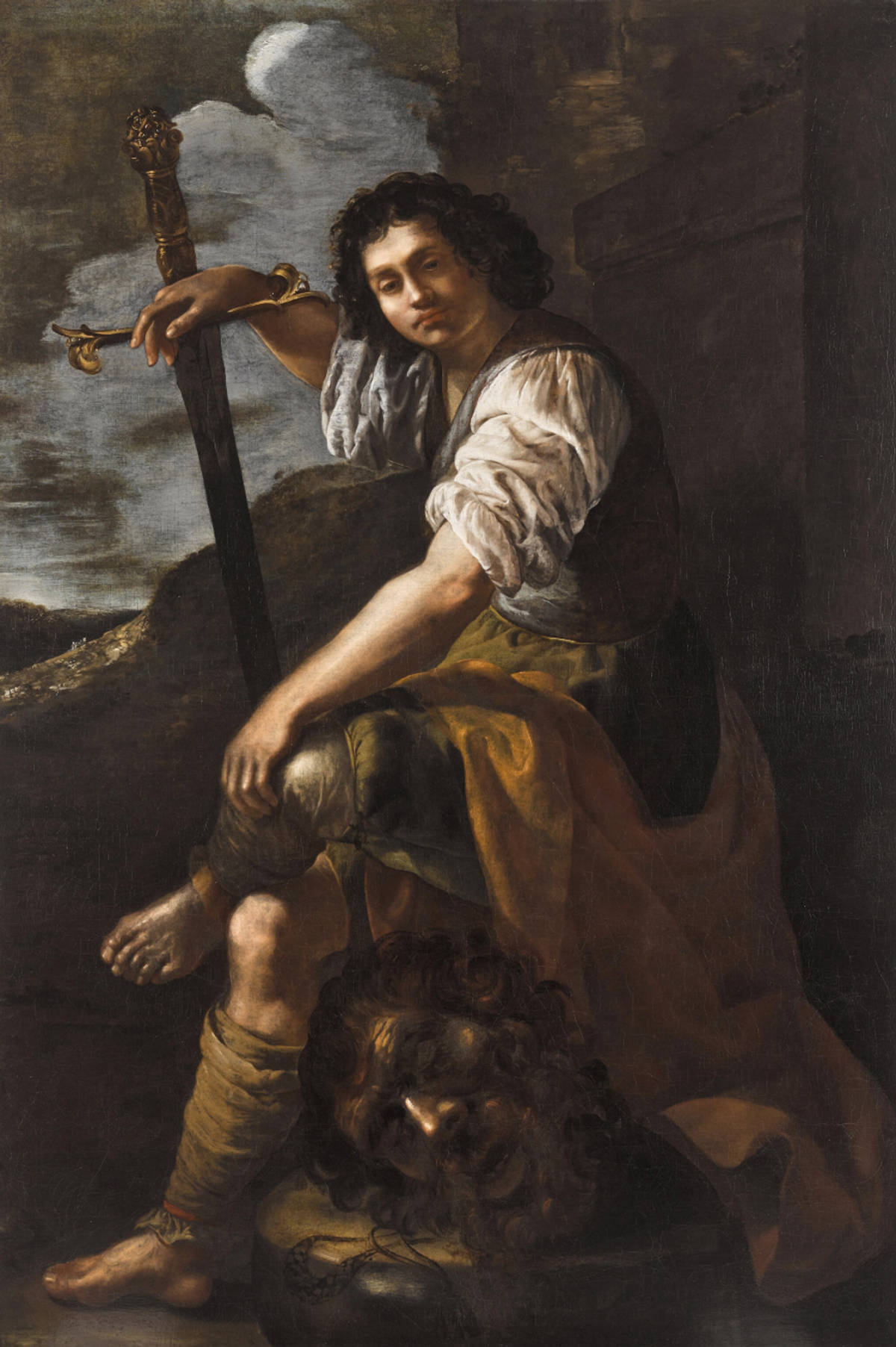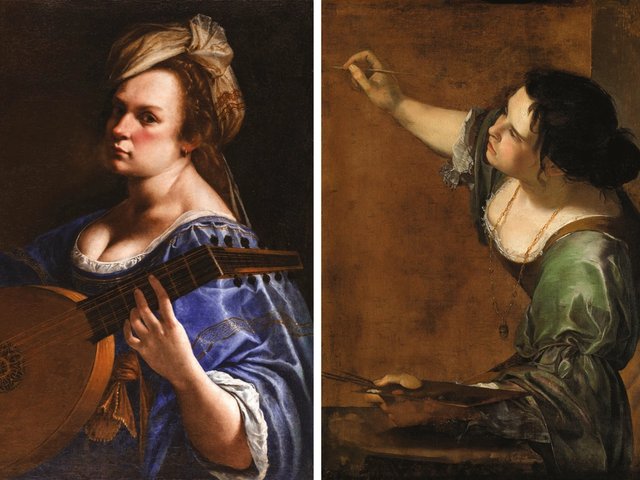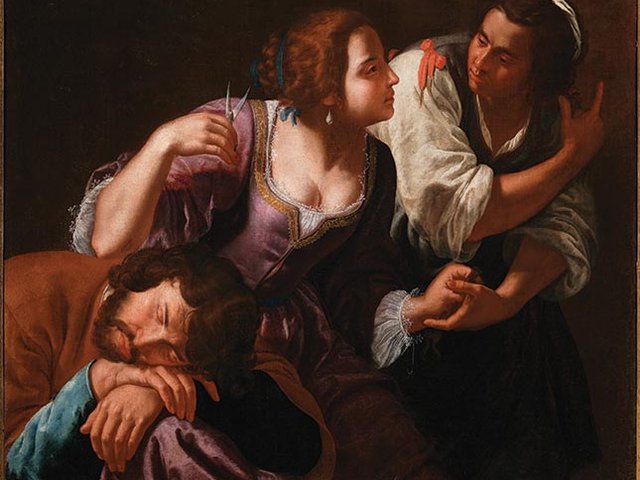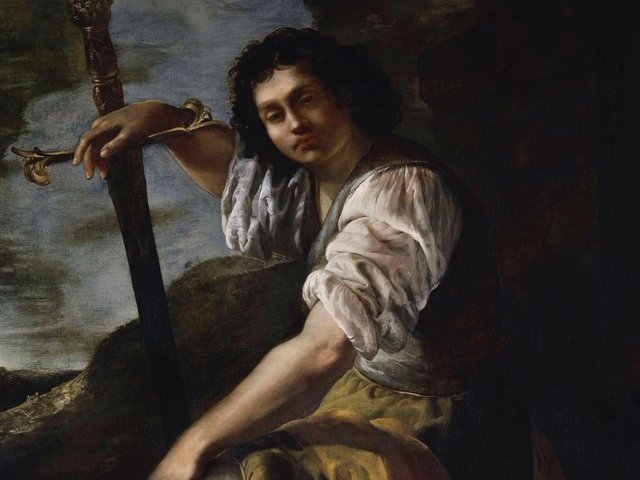The jewel of Sotheby's forthcoming OId Master evening auction on 2 July is one the most significant discoveries made in the category over the past decade.
David with the Head of Goliath (1620s-30s) by Artemisia Gentileschi, estimated for between £1m to £2m, has been on the market just twice before: in 1975 it was listed as by Giovanni Francesco Guerrieri; then, in 2018 it was initially listed by Munich auction house Hampel as 'School of Caravaggio' before being changed to Artemisia a few days before its €104,000 sale.
The definitive attribution came in 2020 when, after extensive restoration and analysis, Simon Gillespie Studio found not only stylistic evidence for Artemisia's hand but her signature, running down the blade from the hilt of David's sword: "ARTEMISIA [...] / FE[C]I[T] 16[…]".
The boldness of this gesture, placing her name on the just-wielded weapon of the unexpected hero, is true to form for the artist who famously proclaimed, "I will show you what a woman can do". It is one of several instances where she used her signature as a form of artistic self-fashioning. In her portrait of Clio, the Muse of History (1632), Artemisia placed her signature in the papers beside Clio, thereby writing herself into the pages of history.
Even more bravura is her depiction of Jael and Sisera: the heroine holds a chisel to the ear of the tyrant in her left hand, while her right lifts a hammer, preparing to drive it into his skull. The hammer's handle points the viewer's gaze towards Artemisia's signature carved into a pillar: the instrument that inscribed Artemisia's name will now vanquish the enemy warrior.
These moments of biblical violence are found throughout Artemisia's oeuvre. Multiple canvases of Judith and Holofernes—some graphic depictions of the slaughter, others atmospheric renderings of the moments immediately after—have cemented her reputation as one of the most significant artists of her generation. The story of David and Goliath, in many ways an Old Testament companion piece to Judith, is another she revisited throughout her career.
With the canvas standing at over two metres, the Caravaggesque boy, David, seems to tower over the viewer. Unlike other extant versions by Artemisia's hand, where he brandishes the giant's head for the viewer, here the eye takes a moment to find it, emerging from the darkness at the bottom of the canvas.
Some experts have raised the possibility that it was painted during her brief London period of the late 1630s, which would make it only the third attribution from these years (alongside Self-Portrait as the Allegory of Painting,
1638–39, and Susannah and the Elders, 1638-40, both found in the Royal Collection). But the work may also date from the time she spent in Rome a decade earlier.
The difficulty of dating the painting is characteristic of one of the most the distinctive features of Artemisia's work: her stylistic versatility, as she shifted, adapted, and re-adopted different compositions for new commissions and patrons. It is one of the things that makes her such a thrilling artist, as well as something of an enigma.






